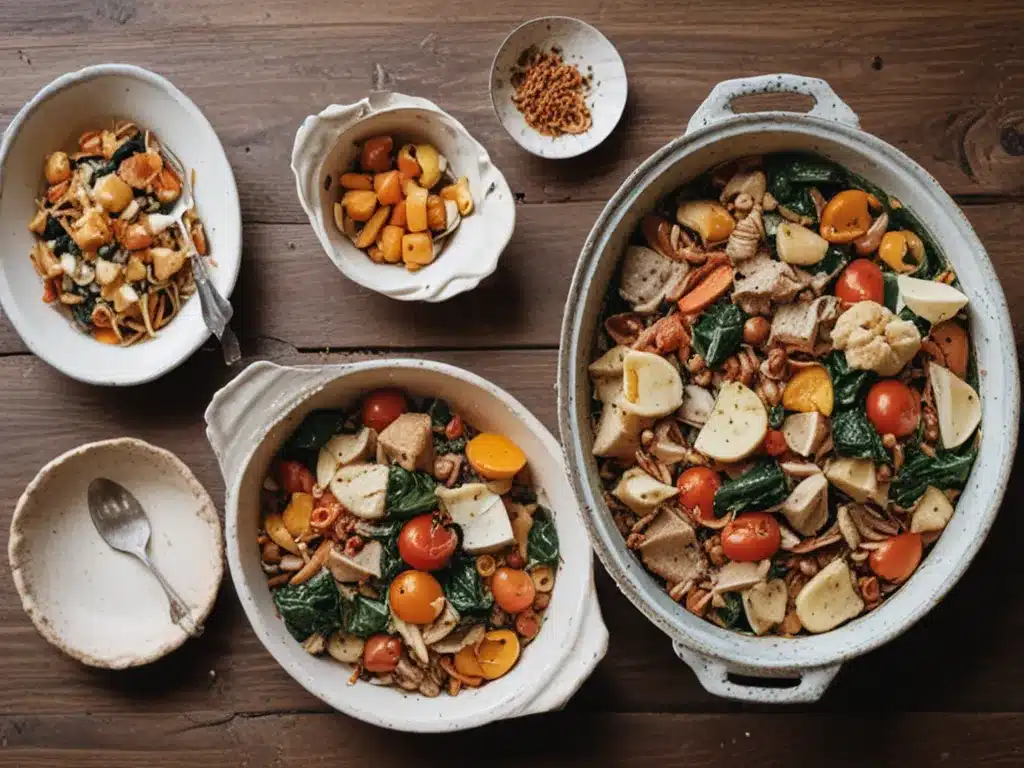
What is Upcycling?
Upcycling is the process of transforming discarded items or materials into new materials, objects, or products of a higher quality or increased value than the original item had. Some key things to know about upcycling are:
Upcycling reduces waste by giving new life and purpose to items that may otherwise have ended up in the landfill. When I upcycle materials like vegetable scraps, eggshells, or coffee grounds, I lessen the amount of food waste going to the garbage.
Upcycled items are often more eco-friendly and sustainable than buying something new. For example, when I make broth from vegetable scraps to use in cooking instead of purchasing store-bought broth, I create zero new waste.
The process of upcycling can be very creative. It allows me to think of new and interesting ways to repurpose items in my kitchen and turn them into delicious dishes. Coming up with upcycling recipe ideas challenges my problem-solving and crafting skills.
Upcycling Vegetable Scraps into Broth
One of the easiest and most versatile ways to upcycle is by turning vegetable scraps into homemade broth. Broth made from scraps adds flavor to soups, risottos, sauces and more. Some key steps when upcycling vegetable scraps into broth are:
First, I collect vegetable scraps like onion ends, carrot peels, limp celery stalks, mushroom stems, and wilted herb stems in a freezer bag in my refrigerator. A variety of scraps adds complex flavor.
Once the bag is full, I add the scraps to a stockpot along with enough water to cover by 1-2 inches. I bring the water to a boil then reduce heat and simmer, covered, for 1-2 hours. Longer simmering pulls more flavor from the scraps.
After simmering, I let the broth cool slightly then strain it through a fine mesh strainer into containers, discarding the solids. The broth can be used immediately or stored in the refrigerator for 3-5 days or frozen for several months.
Making broth from scraps is an easy way for me to feel less guilty about food waste. The broth adds depth and nutrients to other dishes, all while keeping food out of the landfill.
Upcycling Eggshells into Calcium-Rich Baking Powder
Eggshells are another common kitchen scrap that can be upcycled. After using the egg, I wash and allowed the eggshells to air dry completely before upcycling them. Here is the process I follow:
I break or crush the dried eggshells into small pieces or a powder using a mortar and pestle or spice grinder. This can take some time but is very therapeutic!
Once the eggshells are powdered, I measure out 1 tablespoon of powder per large eggshell used. This amount contains about the same amount of calcium as a whole egg.
I then mix the powdered eggshells with 2 tablespoons of cream of tartar and 1/2 teaspoon of baking soda. This creates a calcium-rich baking powder substitute.
I can then use this upcycled “baking powder” in any recipe that calls for 1 teaspoon of regular baking powder, like pancakes, muffins or biscuits. Not only am I repurposing a kitchen scrap, but I’m also adding a boost of nutrients to my baked goods.
Making baking powder from eggshells allows me to feel good about reducing food waste while also getting some extra calcium into my diet. Upcycling scraps has never been so easy – or delicious!
Upcycling Coffee Grounds into Fertilizer
Coffee grounds make an excellent organic upcycled fertilizer for houseplants or gardens. Here is the simple process:
I collect used coffee grounds in a container on my counter and allow them to air dry completely before using them. Wet grounds could promote mold growth.
Once dried, I can add a layer of grounds around plant bases, scatter them on top of potting soil, or mix a few handfuls into compost. The grounds add nitrogen, phosphorus and potassium to the soil.
Plants benefit from the extra nutrients boost provided by upcycled coffee grounds. I’ve noticed an improvement in growth and bloom for my herbs and flowers.
As an added bonus, used coffee grounds also act as a pest deterrent for ants and other insects when mixed into soil. Their strong scent keeps pests away from vulnerable plant roots.
Turning coffee waste into plant fertilizer is an easy way for me to give something “used” a new purpose. Both my plants and the environment thrive thanks to some simple upcycling.
In conclusion, upcycling kitchen and food scraps provides numerous creative and sustainability benefits. The processes outlined transform discarded items into delicious dishes, reduce landfill waste and give extra nutrients to plants. With just a bit of inspiration and repurposing, upcycling allows me to feel good about minimizing my household’s environmental footprint in the kitchen.






